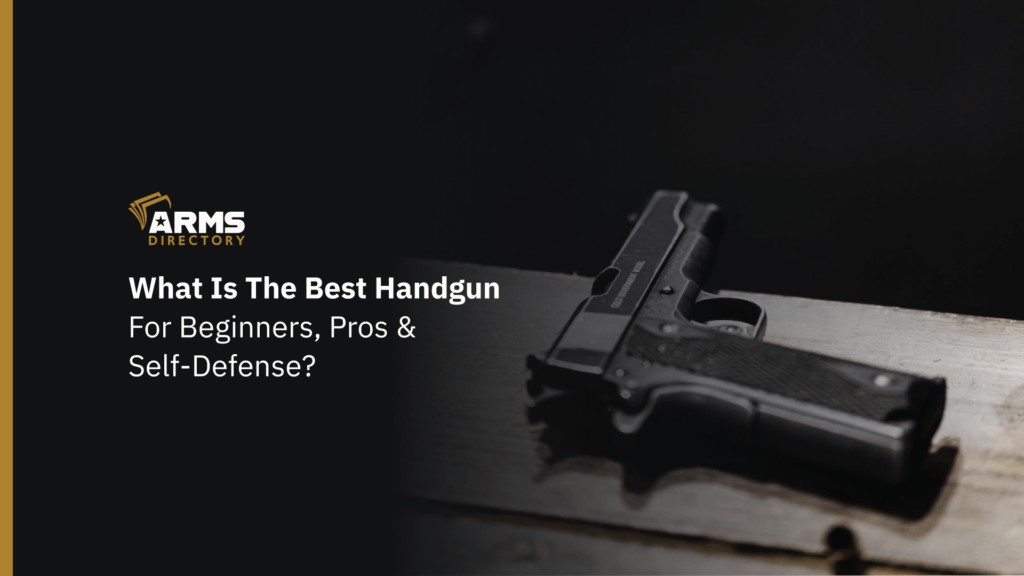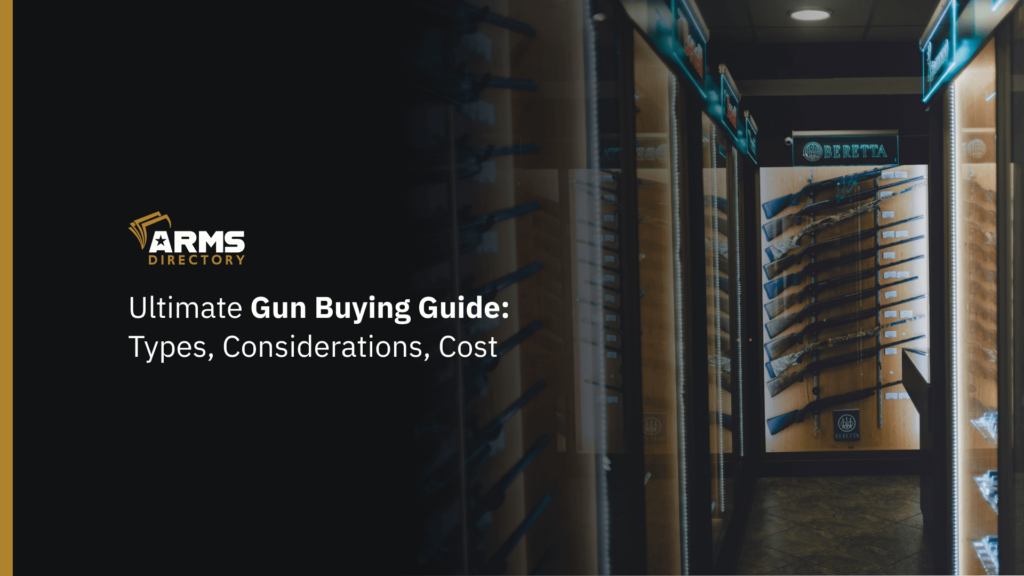
Ultimate Gun Buying Guide: Types, Considerations, Cost
We, at Arms Directory, are passionate about firearms, gun rights, and freedom of speech. Our team consists of firearm industry experts, and we always aim to educate, entertain and defend our Second Amendment rights.
In the following gun guide, you will find our expert gun reviews, as well as, our recommendations and other valuable information about guns.
Be sure to bookmark this article, as we will update it regularly, as we publish new firearm reviews and industry-related news to make sure you stay up-to-date with anything gun-related.
Today, we’ll be covering the following topics:
- How Many Guns Does an Average American Own?
- Understanding Firearm Types
- Key Factors to Consider Before Buying
- Understanding Firearm Accessories
- Cost of Ownership
- Our Brand Spotlights and Gun Reviews
- Online Gun Dealers and Business Reviews
- Future Trends in Firearm Technology
First, let us start by answering an important question:
How Many Guns Does an Average American Own?
Unfortunately, there is no clear and straightforward answer to this question. Yet, according to statistics, in 2022, roughly 45% of U.S. households had at least one gun in their possession.
American households with ownership of one or more firearms has been fluctuating between 37-47% from 1972 to 2022. Ultimately, it’s safe to say that at least one third of Americans own one or more firearms.
Understanding Firearm Types
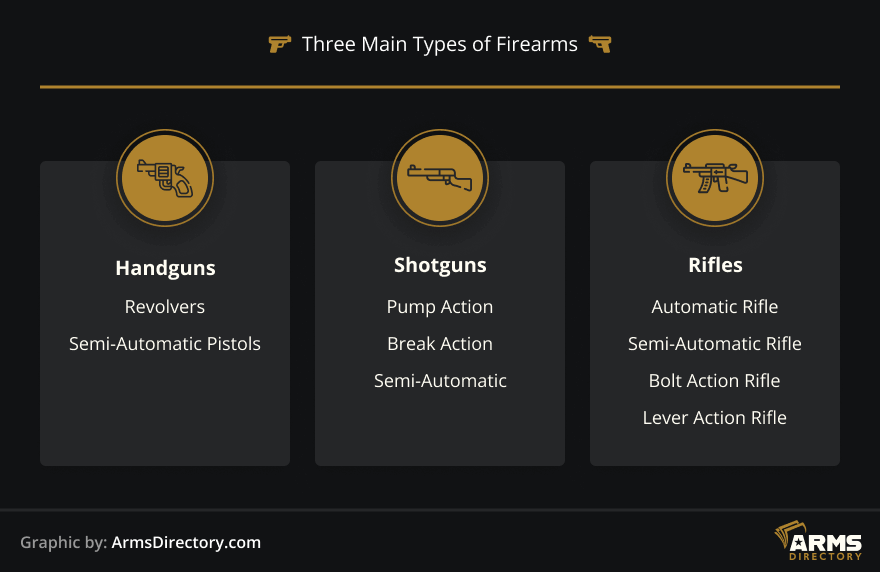
There are three main types of firearms:
- Handguns
- Shotguns
- Rifles
Handguns
In essence, a handgun is a type of firearm, designed to fit, and be used with one hand, as opposed to the long gun, which requires the use of both hands, and the shoulder. The two most common types of handguns are revolvers and semi-automatic pistols.
Revolvers typically use a cylindrical chamber system that holds the ammunition. When you pull the trigger, the revolver fires, then it simultaneously rotates the cylinder to place a new round in position to be fired next.
Semi-automatic pistols fire one round every time you pull the trigger, until you run out of ammo.
Shotguns
A shotgun is a firearm with a long barrel, crafted to shoot multiple shot shells with either projectiles that spread once they exit the gun barrel or one large slug.
Shotguns are versatile firearms, as they possess the capability to fire projectiles of various sizes. Rifles, on the other hand, typically only use a specific caliber – a .223 caliber rifle can only shoot .223 caliber ammo.
The three main types of shotguns are:
- Pump action. Known as being among the best home defense shotgun, a pump action shotgun is single barreled, and can hold more than one round. Once you fire the gun, the spent shell is removed, and a new one is chambered by pulling the pump handle towards yourself. Thus, the name pump action shotgun.
- Break action. Usually, double-barreled shotguns hinged between the barrel and the stock. In order to load ammunition, you need to “break” the barrel to uncover the breech where you load the ammo.
- Semi-automatic. Semi-automatic shotguns hold multiple shots in the barrel. They fire single shots, and after that, they automatically eject the spent shot, and chamber a new one.
Rifles
A rifle is a long-barreled firearm, created for accurate shooting at longer distances. It’s fired with the stock held against the shoulder.
The term “rifle” comes from the Old French word “rifler,” which means “to graze” or “to scratch.” The rifling is a machining process that involves cutting spiral grooves into the bore of the barrel, which imparts a spin to the projectile as it travels through the barrel. This spin stabilizes the projectile, allowing for more accurate and longer-range shots compared to smoothbore firearms, which do not have rifled barrels. Rifles are popularly used in military, law enforcement, hunting, and shooting sports.
The four main types of rifles are:
- Automatic rifle. An automatic rifle is capable of shooting as long as the trigger is pulled, and there is ammunition to fire. Keep in mind that it is forbidden for civilians in the U.S. to own an automatic rifle, unless it was produced before May 19th, 1986, and even then, you have to comply with a lot of rules and regulations.
- Semi automatic rifle. Semi automatic rifles are quite similar to automatic rifles, with one major difference: they will only fire a single round for every pull of the trigger. Popular examples are the AK-47 and AR-15.
- Bolt action rifle. A rifle with a manual type of action. Once you pull the bolt backwards, you eject the case you’ve spent, and upon returning the bolt forward you chamber a new round. These types of rifles are much slower compared to modern designs, but have a better accuracy than automatic and semi automatic rifles.
- Lever action rifle . In these types of rifles, the shooter must pull a ringed lever, next to the trigger, in order to eject the spent round and chamber the next. Lever action rifles have a slower fire rate than semi automatic rifles, but are more accurate, similar to bolt action rifles. It is not the best choice for a self-defense weapon, and it was never issued by the U.S. Army, since they are very difficult to operate with, while in prone position.
Understanding Firearm Accessories
You know how automobile lovers like to tune their cars with upgrades and modifications? The same goes for firearm enthusiasts. It’s not all about design and visuals, too. Customizing your gun can improve its accuracy, and enhance its shooting consistency, as well as increase its safety.
Let’s take a look at some common firearm accessories and what they do.
Optics and Sights
There are many ways that various optics and sights can enhance your shooting experience. For example, a red dot sight can help you aim better while hunting, improve the usability of your firearm, give you higher visibility, and increase the firing speed.
Using rifle scopes can help you shoot at a longer range and give you the ability to bring down your shot with a higher success rate. Another psychological factor is that with a scope, you actually gain more confidence and trust in your shot.
Grips and Stocks
Pistol grips provide a much better overall comfort for shooters. Through improving the grip traction, they reduce recoil, and give superior shooting accuracy and control.
Rifle stocks help shooters securely brace their rifles, providing stability for easier aiming. They also counteract muzzle rise by directing the recoil straight into the shooter’s body.
Rails and Attachments
Rail integration systems (RIS) are a common accessory for most modern weapons. They enable adding attachments and also serve as hand guards. Some popular attachments include: a flashlight, various sights, pods and grips, and lasers.
Rails can be modified by both height and angle. You can angle them at 22°, 45°, and 90°. One may also incorporate rail guards, which are frequently employed by soldiers to prevent debris from getting stuck.
Suppressor and Muzzle Devices
There are various types of muzzle devices, including muzzle brakes, flash hiders, and compensators. Muzzle devices help to reduce the recoil, and enhance the overall shooting experience.
The goal of muzzle brake is to reduce the felt recoil, and reduce flash. Flash hiders are designed to hide the flash from the muzzle brake. Compensators are meant to reduce the muzzle rise of the gun, which allows the shooter to have a flatter shooting gun and keep the gun on target easier in multiple strings of fire.
Suppressors are muzzle accessories that are designed to decrease the overall intensity of the gunfire sound.
Holsters and Carry Gear
Gun holsters are designed to restrict undesired movement of the gun, typically in a location where it can be quickly drawn, usually to the belt or waistband, but also the ankle.
Using a holster decreases the chances of accidents, like an unintentional discharge. While they are not legally required, it is highly recommended to use one.
In general, carry gear is split into two major categories: concealed or open carry. The abovementioned are concealed, because they are hidden, while open carry gear is visible.
Key Factors to Consider Before Buying
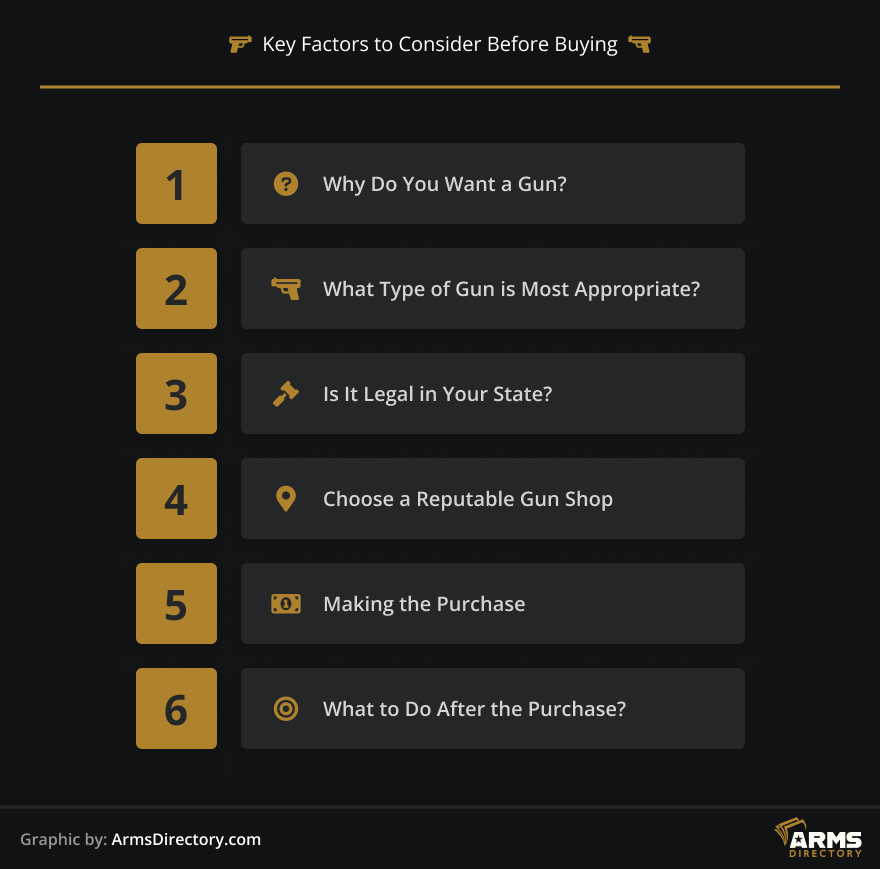
A person who is unfamiliar with firearms might purchase a weapon that is not best suited to their needs. Therefore, it is essential to know and consider these main factors before you buy guns online:
- Why Do You Want a Gun?
- What Type of Gun is Most Appropriate?
- Is It Legal in Your State?
- Choose a Reputable Gun Shop
- Making the Purchase
- What to Do After the Purchase?
Why Do You Want a Gun?
First, you need to clearly establish the reason for purchasing a gun. Do you want it for self-defense? Perhaps you want to enjoy target shooting with friends, or you’ve decided you want to venture into hunting? Maybe you want to get into competitive shooting?
Your choice of firearm will vary depending on why you need it, so as obvious as it may seem, make sure you know the exact purpose of why you want to buy a gun.
What Type of Gun is Most Appropriate?
Once you know the reason behind your desire to purchase a firearm, you can go on to decide what type will be best suited for you.
Handguns are best for self-defense and are very accurate at short distances. Rifles are preferred for hunting, target shooting, and competitive shooting since they possess a higher accuracy at long range. Shotguns are most popular for bird shooting, clay shooting, shooting competitions, and simple target shooting.
Is It Legal in Your State?
Every state has its own rules and regulations on owning firearms. What is permitted in Alabama, might not be in Maine, so it is important to do your research before purchasing.
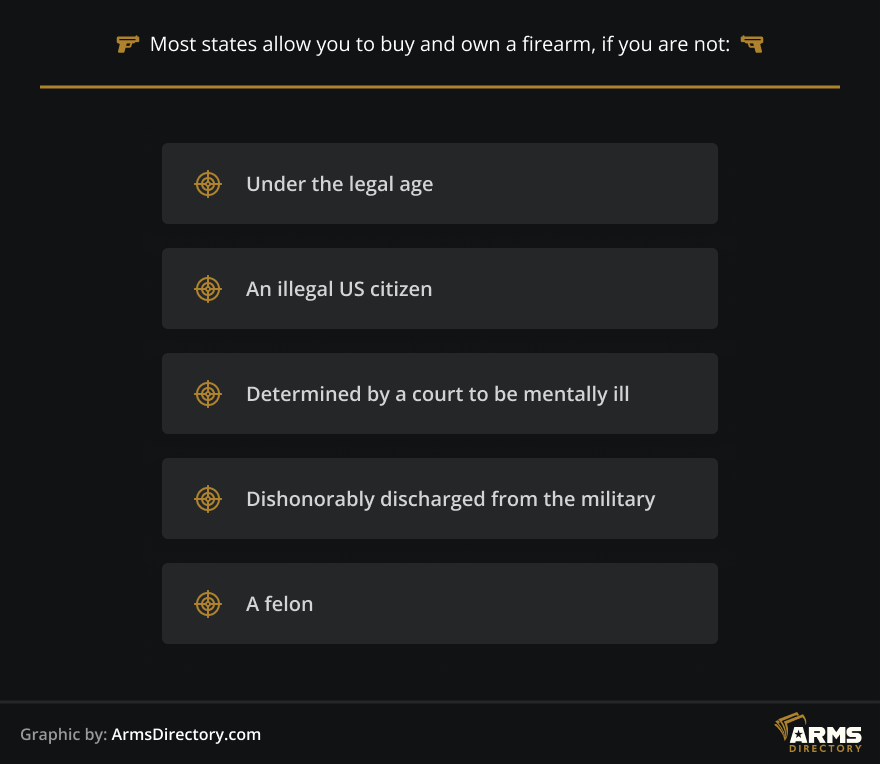
In general, most states allow you to buy and own a firearm, if you are not:
- Under the legal age.
- An illegal alien.
- Determined by a court to be mentally ill.
- Dishonorably discharged from the military.
- A felon.
Choose a Reputable Gun Shop
Picking a questionable, shady-looking gun shop to purchase a firearm is not a good idea. Ideally, you would want to choose a gun shop that is trusted, and has a knowledgeable staff to help you with the purchase.
What’s more, some gun shops allow you to rent out guns, so you try a certain type or model before you actually make the final decision.
Making the Purchase
Owning a firearm is not something that should be taken lightly, so before you can actually purchase it, you must present valid identification – government issued ID, like a driver’s license, passport, or military ID.
Once the gun shop runs a background check, and verifies your ID, you will also need to complete an ATF Form 4473 to confirm your information and eligibility. Keep in mind that some states require you to fill some similar, additional state forms. Some states have a multi-day waiting period before you can take the gun home.
What to Do After the Purchase?
You are now an official gun owner – congratulations! From here on, it would be best to sign-up for a firearms safety, or introductory shooting course, so you can learn all the basic rules on how to handle and properly store your weapon.
Additionally, you need to purchase ammunition, a gun case to carry your firearm, a safety lock, and even a gun safe where you can store your weapon when it is not being used. Some states even require you to keep your guns locked up when not in use.
Cost of Ownership
Are you wondering how much a gun costs in 2023? It is safe to say, it is not a cheap hobby, but, of course, the cost of owning a firearm, depends on the type, overall quality, and accessories to go with it.
In short, though, the cost of purchasing a gun can range between $400 and $800. Of course, it could be more, it could be less, so let’s review some more specific cases.
How Much Does a Handgun Cost?
If you want a handgun to carry with you on a daily basis, costs are around $400-$700. Popular options for concealed carry handguns include the 9 mm micro-compact, semi-auto SIG Sauer P365 ($500), the .38 Snub-Nosed Revolver, compact S&W Bodyguard 38 ($430), and the 9 mm subcompact, Glock 43X ($470).
In terms of revolvers, the prices can go even higher. While, at the lower end of the scale, you have the .38 Revolver compact, Rock Island Armory M206 costs $260, at the higher end, you have the .357 Revolver full-size, Colt Python 357 ($1525), and the .500 Revolver full-size, S&W Performance Center 500 ($1760).
If you are looking for a home-defense handgun, popular choices are the .40 Semi-Auto full-size, Glock 22 ($500), the 9 mm Semi-Auto full size, SIG Sauer P320 ($610), and the .45 ACP Semi-Auto full-size, Walther PPQ M2 ($800).
How Much Does a Shotgun Cost?
Hunting shotguns cost around $250-$750, depending on what you will be hunting. For example, a turkey .410 Single Shot Stevens 301 Turkey will cost $220, while a waterfowl 20GA Semi-Auto Franchi Affinity Elite will be $1200.
Good home defense shotgun options include the 20GA Pump long Remington 870 Express Tactical ($440), the 12GA Pump bull pump Keltec KS7 ($510), and the 20GA Pump short Mossberg 590 Shockwave ($425).
When it comes to competition shotguns, you should be prepared to spend a lot more. The 12GA Semi-Auto 3 gun Benelli Performance M2 3-Gun is $2300, the 20GA Semi Auto skeet/trap Benelli Super Black Eagle III is $1650, and the 12GA Over/Under skeet/trap Browning Citori 725 Pro Trap is $4400.
How Much Does a Rifle Cost?
Rifles average between $500-$1500. A hunting rifle for small game, .22 Cal Semi-Auto Ruger 10/22 costs $330, while a big game .308 Win Bolt Action Browning X-Bolt Hunter is $1000.
In terms of competition rifles, you can get a .223 Rem Bolt Action long-range Christensen Arms Precision for $1800, a 6.5 mm CM Bolt Action long-range Howa HCR, and a .308 Win Bolt Action long-range Tikka T3X Tact A1 for $2200.
Of course, the AR15 rifle is the most popular in the US, and if you want to purchase such, expect to pay between $600-$1200 on average. A 5.56 Semi Auto mid Springfield Armory Saint costs $970, a 5.56 Semi Auto budget PSA PA-15 is $550, and a 5.56 Semi Auto high Wilson Combat Protector is $2100.
How Much Do Firearm Accessories Cost?
Naturally, when owning a firearm, simply purchasing it is not the only expense. There are some essential accessories you must buy, as well.
You can’t go without ammunition. While the prices of ammo can change by the day, the price of handgun ammo is around $0.50 per round, a rifle ammo round is around $0.92, and shotgun ammo is valued at roughly $0.60 per round.
If you want to carry your handgun with you on a daily basis, you will also need to purchase a concealed carry holster. The price can differ from $15 to $170 or more, depending on the material, quality of production, and design.
Gun cleaning kits are another mandatory firearms accessory. They include gun cloths, which are used to clean the debris from the inside and outside of your gun, a barrel cleaning brush, cleaning solvent, gun oil, etc. On average, the pricing on such kits are around $50.
Another mandatory item is the weapon carrying case – it is used to transport your firearm until you reach the firing line, or when you are flying, for example. Again, the prices will vary, depending on the type of firearm. A gun case, for instance, might cost you around $20 to $100, for rifles – $30 to $300, and for shotguns around $180.
Our Brand Spotlights and Gun Reviews
At Arms Directory, we like to inform our audience about the best brands on the market, and share all the latest updates, and groundbreaking inventions they have to offer.
Below, at a glance, you will find all our brand spotlights. Read them to find out more about the latest innovations in the world of firearms.
Brand Spotlight: Dark Storm Industries – Innovating Firearms for Every State
Brand Spotlight: TACRIG – Innovative Modular Holster System
Brand Spotlight: F-1 Firearms – Upgraded AR-Style Guns
Brand Spotlight: Automag – The Iconic Big Game Hunting Pistol
Brand Spotlight: Pristine Action – The Smoothest Action
Brand Spotlight: Yankee Hill Machine – Deep Dive into Innovative Suppressors
Brand Spotlight: ETS – Elite Tactical Systems – Speed Loader and Magazines for Enhanced Efficiency
Introducing: Smith & Wesson CSX 9mm Pistol [Review & Specs]
Brand Spotlight: Elite Iron – Innovative Suppressors and Bipod Solutions
Brand Spotlight: AR-Takedown Tool – Game Changer for the AR Platform
Brand Spotlight: Pro Ears – Revolutionizing Ear Protection
Brand Spotlight: Longshot Cameras – Revolutionizing Target Shooting
Brand Spotlight: Incognito Wear IX – Stylish and Functional Clothing for Concealed Carry
Brand Spotlight: Tippmann Arms – Innovative .22 Caliber Firearms
Brand Spotlight: Kore Essentials EDC Gun Belt – The Perfect Fit for Your Firearm
Brand Spotlight: Rapid Weapon Deployment Systems
Brand Spotlight: UM Tactical – Innovative Holsters and Muzzle Brakes
Brand Spotlight: Mirzon Grips and Their Innovative P320 Grip Modules
Brand Spotlight: Altor Corp
Brand Spotlight: Handi-Racker
Brand Spotlight: Ballistic Barrier Products
Online Gun Dealers and Business Reviews
Finding the best online gun dealers is crucial. That’s why, at Arms Directory, we are dedicated to listing the best gun stores, gunsmiths, NFA retailers, and ranges.
Show support for your favorite businesses across the country and help other people make decisions by rating and leaving reviews. You can find your local gun store in our business directory.
Feel free to submit your business to become a member of our community.
What Is the Best Gun?
Actually, there is no single answer valid for everyone and every scenario.
Yet, if you’re asking what is the most effective gun in history, then the answer would be among the lines of Glock 17, AK-47, M1 Garand, Colt M1911, MG-42, and Uzi.
If you are wondering, where are the best guns in the world made, then the answer would, unsurprisingly, the U.S., followed by Germany, Austria, Italy, Belgium, and Russia.
Future Trends in Firearm Technology
Just like every other aspect of our lives, technology is reshaping the way we use firearms.
A big trend is the development of smart guns that aim to enhance user experience, and safety. They use biometric fingerprint recognition or special grips that only let authorized people shoot them, making them the perfect choice for self-defense weapons.
The future of firearms is also influenced by the use of enhanced, durable and lightweight materials. Such materials reduce the weight of guns, make them easier to carry, and handle, and can also improve recoil management, and increase accuracy.
Another essential advantage is the development of self-steering bullets. Such bullets would allow for much better accuracy through allowing the shooter to hit moving targets, granting the feeling of a sniper.
Last but not least, hybrid hunting guns have made hunting even more pleasant. By mixing sports firearms and tactical guns, hybrid rifles allow for higher customization. Improvements are still ongoing, so we are excited to see where hybrid hunting guns will go.
Over to You
What do you think of our gun buying guide? Did you find it informative? Was it helpful for you to better understand firearms, and what you need to consider before purchasing?
In all cases, let us know your thoughts in comments below – we would be happy to hear from you.
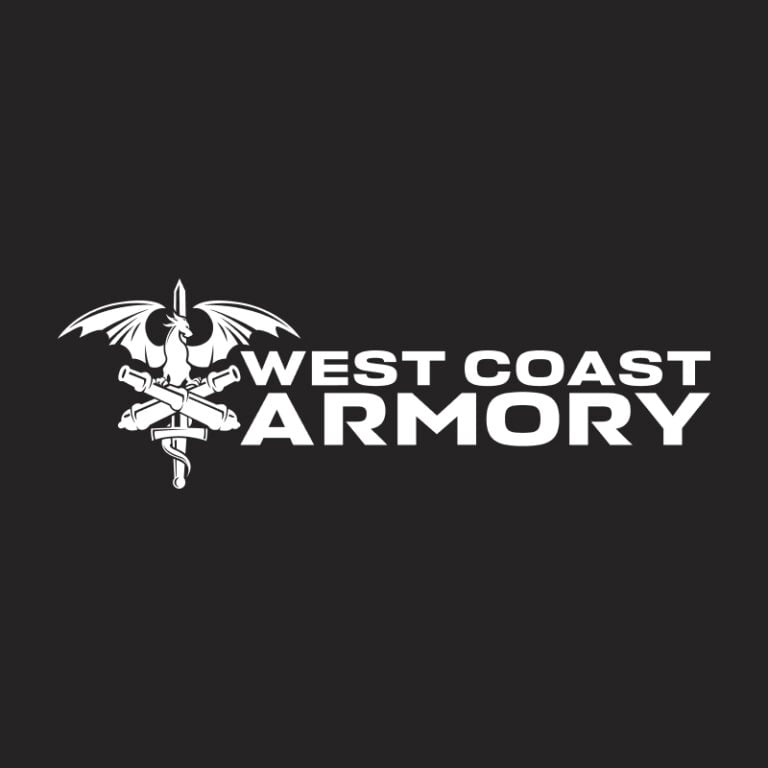
![The Ultimate Shooting Accessories for Every Weapon [A 2023 Beginners Guide]](https://vault.armsdirectory.com/wp-content/uploads/2023/08/30071223/The-Ultimate-Shooting-Accessories-for-Every-Weapon-A-2023-Beginners-Guide-1024x576.png)
![Close Encounters Shotgun for Home Defense [2024 Guide]](https://vault.armsdirectory.com/wp-content/uploads/2024/02/06060541/Close-Encounters_-Shotgun-for-Home-Defense-2024-Guide-1024x576.png)
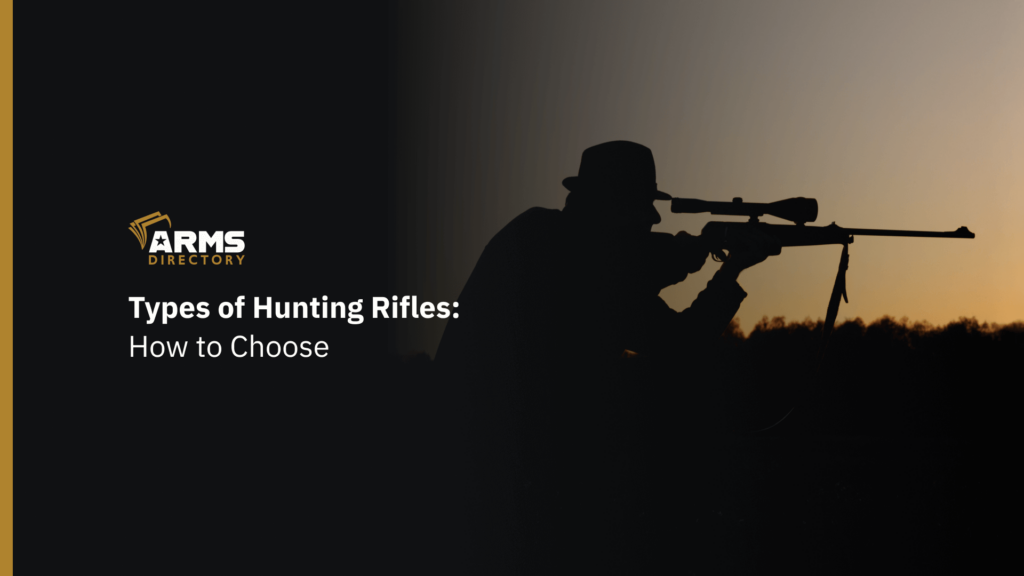
![The Right Way to Buy and Sell Firearms Online [Guide]](https://vault.armsdirectory.com/wp-content/uploads/2023/10/20050323/The-Right-Way-to-Buy-and-Sell-Firearms-Online-Guide-1-1024x576.png)
